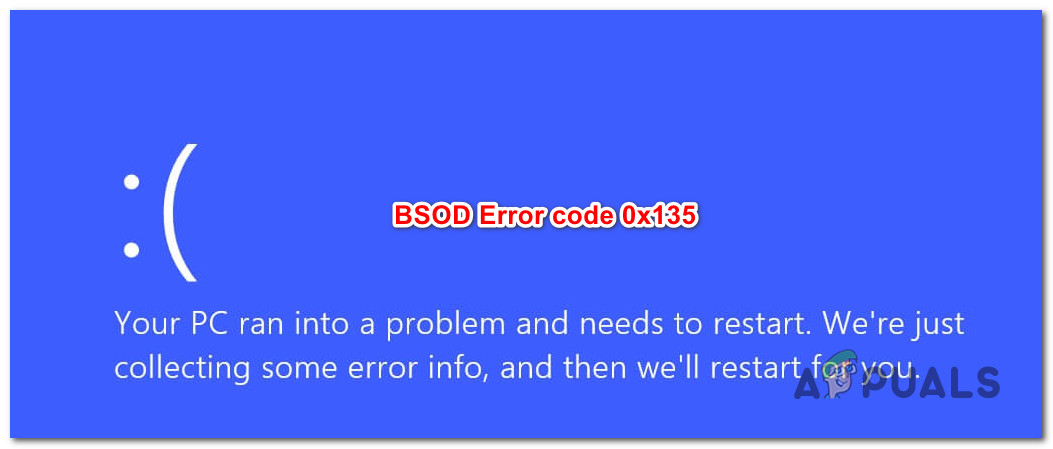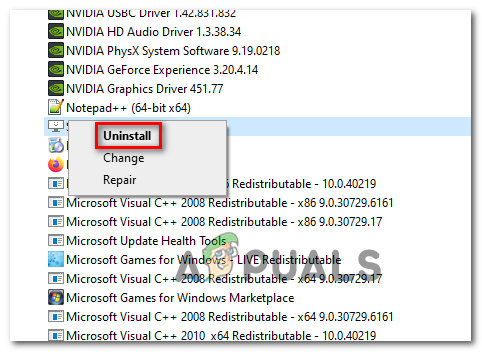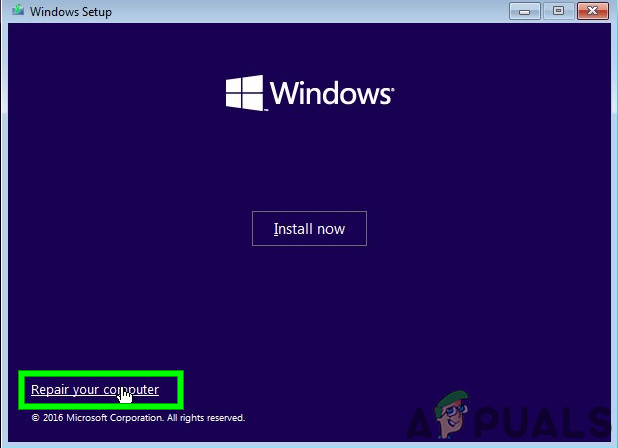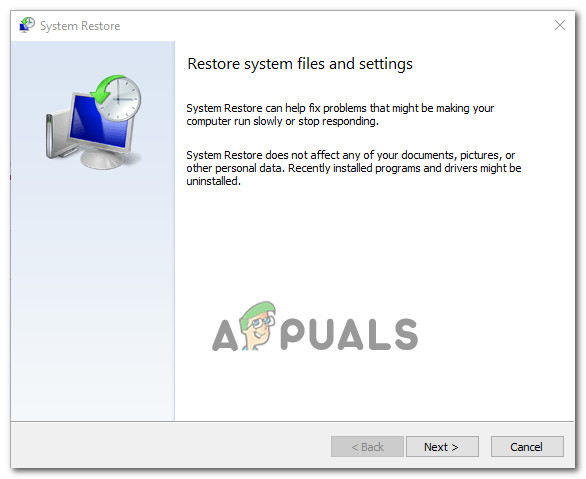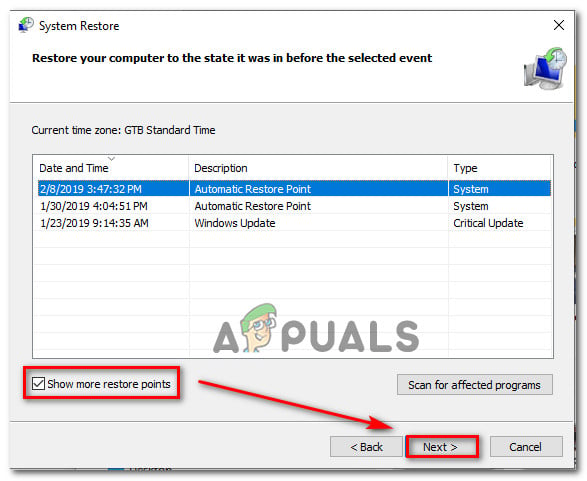As it turns out, there are several different causes that might contribute to the apparition of this critical error. Here’s a shortlist of potential culprits that are known to cause this behavior on Windows10:
Method 1: Uninstalling Conflicting Software (if applicable)
As it turns out, there are a couple of problematic 3rd party applications that are known to conflict with some crucial Kernel processes and cause this error code. Several affected users have managed to fix the problem by uninstalling Webroot and Dragon Center – These applications use 2 files (WRkrn.sys and DCv2.exe) that might cause your WIndows application to become unstable. If this scenario is applicable and you’re actively using these programs on your computer, you should be able to prevent any new instances of this critical 0x135 BSOD by uninstalling the parent applications that facilitate this conflict. If you’re not sure how to do this, just follow the instructions below: If the problem is still not fixed, move down to the next potential fix below.
Method 2: Rebuilding the BCD data
Another potential culprit that might trigger this type of behavior is a problem with the Boot Configuration Data – This is even more likely if you’re encountering the BSOD crash during the startup sequence. Fortunately, this problem can usually be resolved by taking the appropriate steps to rebuild the Boot Configuration Data with a series of CMD commands (ran from an elevated terminal). To rebuild the BCD data on your Windows computer, follow the instructions below: Note: The instructions below assume that you can’t get past the booting sequence. If you are able to, you can run the commands below from an elevated CMD window. If you’re still dealing with the same kind of BSOD even after refreshing your Boot Configuration Data, move down to the next potential fix below.
Method 3: Using System Restore
If the problem only started occurring recently, there’a high chance that a recent software change caused this type of instability that ends with the 0x135 error code. And since it can be hard to pinpoint the culprit, the best thing you can do is revert your computer to a state in which this BSOD was not occurring. Several affected users have managed to fix the problem by using System Restore to revert their machine back to a healthy state. System Restore is a built-in utility that comes enabled by default on your Windows 10 computer. If you want to give this method a try, follow the instructions below to use the System Restore wizard to use a restore snapshot to circumvent the apparition of the 0x135 error code: If the same problem is still occurring, move down to the next potential fix below.
Method 4: Refreshing every Windows component
If none of the methods above have worked for you, it’s very likely that you’re encountering this problem due to some kind of underlying system file corruption that you will not be able to fix conventionally. If this scenario is applicable, the most effective way of getting this issue resolved is to reset every file related to your Windows 10 installation. When it comes to doing this, you have a couple of options:
Clean install – This is the easiest procedure out of the bunch as you don’t need compatible installation media. This procedure can be initiated directly from the GUI menu of your Windows 10 computer. However, one major drawback is that unless you back up your data in advance, you will effectively lose any personal data that is currently stored on the OS drive.Repair install (In-place Repair) – This is the focused approach since it allows you to refresh your OS files without touching your personal files, apps, games, media, and even user preferences. However, to initiate this procedure, you’ll need a compatible installation media.
Fix: Stop Error Code 0x00000024 BSOD on WindowsHow to Fix rtf64x64.sys BSOD Error Code “0x000000d1” in Windows?How to Fix BSOD Error Code 0x0000001eFix: BSOD with 0x0000003b Stop Error Code
